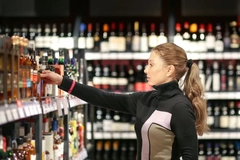Study reveals FMCG giants’ role in global plastic pollution and calls for accountability

A recent study revealed that from 2000 to 2023, Coca-Cola, PepsiCo, and Nestlé produced around 138 million metric tons (MMT) of plastic, of which 8% to 11% was recycled. The study urges FMCG companies to take responsibility for the plastic they produce and ensure that the packaging material reaches waste management systems.
Packaging Insights speaks to Nivedita Biyani, co-author of the study, about the research’s implications for the FMCG industry and plastic pollution. Biyani advocates for increased transparency in plastic consumption reporting, recycling efforts, and better waste management systems.
“For each dollar of revenue, the three companies have generated approximately 40 g of plastic, of which 49-58% becomes aquatic and terrestrial pollution, costing countries US$13–19 billion globally per annum in externalities,” says Biyani.
Without change, the study predicts these companies could add approximately 339 MMT plastic mass to countries globally by 2050, costing around US$101 billion.
Biyani adds: “The biggest takeaway for me is that infrastructure investments in just two regions, Southeast Asia and the Pacific, and Latin America and the Caribbean, could abate 77% of marine-bound plastics from these three companies.”
The study says that Coca-Cola, PepsiCo, and Nestlé need to take control of their plastic waste, ensuring that it does not negatively impact the environment and the well-being of communities in Southeast Asia, Latin America, and the Caribbean.
The Global South pays
 Biyani urges FMCGs companies to take responsibility for their plastic waste.The study used Coca-Cola, PepsiCo, and Nestlé’s self-reported plastic consumption and revenues to determine plastic production values.
Biyani urges FMCGs companies to take responsibility for their plastic waste.The study used Coca-Cola, PepsiCo, and Nestlé’s self-reported plastic consumption and revenues to determine plastic production values.
Of the 138 MMT of plastic produced, 10–15% became aquatic pollution, and 39–43% became terrestrial plastic pollution.
Explaining the study’s implications, Biyani asserts that companies — rather than consumers — must take responsibility for plastic waste.
She notes: “Is it easier to change nine billion people, 217 countries, or three companies?”
“I would argue it is much easier to make top-down changes to three companies that have a ripple effect on the world. Sub-Saharan Africa and Asia are future markets for these brands, and our estimates suggest that waste management infrastructure cannot keep pace with the strong economic growth. They may lead to marine pollution, dumping in non-sanitary landfills, and waste mismanagement.”
The study suggests that FMCG companies with global reach in over 200 countries are “well positioned” to change the current trajectory of global plastic pollution.
“This article does not suggest that the products made by these companies are not useful, but we suggest that strong EPR is important going forward, which translates to monitoring investments into local end-of-life resource management pathways,” says Biyani.
She urges that if a country does not have an efficient waste management pathway established, Cola-Cola, PepsiCo, and Nestlé need to “think critically” about expanding production there.
Data-driven solutions
Biyani stresses the importance of end-of-life data that monitors the real-time movement of plastic waste.
“Data is the most valuable resource, especially for training machine learning models, and we don’t have excellent data on end-of-life materials. How might we use data to end the paradigm of “waste”, and it is just that — a paradigm — that needs to be replaced by a more useful one.”
She notes that waste is a resource just in the wrong place, scale, and state, and urges a radical reimagining of how infrastructure handles it.
Furthermore, Biyani reinforces that Southeast Asia and the Pacific, Latin America, and the Caribbean would benefit most from waste management infrastructure investments.
“I don’t think industry is a villain here, but they have a huge opportunity to act. They are powerful actors in this space, and they know it now. I think with some creativity, the plastic pollution problem can and will be solved.”












